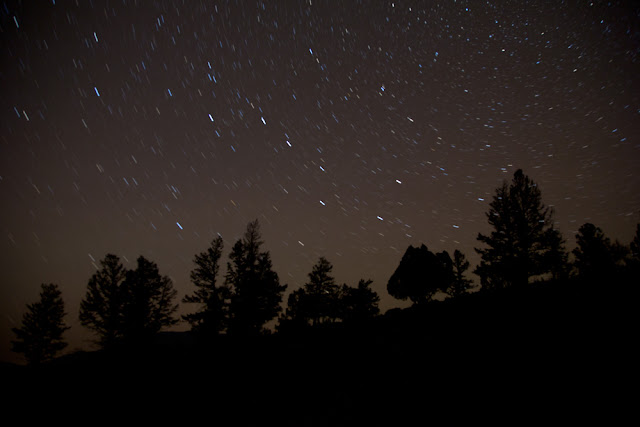
Because we travel so much, people frequently ask me what my favorite place is. That is a very difficult question for me, because I don't have just one favorite place. I have many places that I love - all of them for differrent reasons. That said, Yellowstone is high on the list of favorite places for me. We tend to go back over and over again.
I went first as a child when I was 10 or 11. I went with my grandparents. It was a very brief visit. We saw Morning Glory pool and Old Faithful and drove around the park some. My grandad was very cold natured. The conversation around us made him believe that the available cabins were very cold at night. We drove south through Jackson, but all the hotels were full. I saw the Tetons by moonlight. By the time we found a place to stay it was too far to come back.
My next visit was in 1977. My husband and I had bought a new extended length van and converted it to a camper complete with bed, closet, and simple porta-a-pottie bathroom. We spent about three days in Yellowstone as part of a longer trip that took us all the way through Glacier Naitonal Park and Banff and Jasper in Canada. One of the highlights from that trip was going to all of the viewpoints for the Grand Canyon of the Yellowstone and the beautiful waterfalls. I went all the way down to Uncle Tom's trail. I'm glad I did it then while I was young - it is a LONG way down!
We brought our kids to Yellowstone in 1985 - Thomas was 5 and Debra was 1 1/2. We were tent camping and I think we stayed at Grant Village. Thomas' memory is that you had to wait along time for the geysers to erupt. That was the trip that we focused on the geysers. One day we hit it just right to see Grand erupt with 5 glorious bursts and Riverside. We spent most of the day exploring the Lower Geyser Basin. When we got back to Old Faithful, it was a short single burst - a disappointment after the other longer geysers.
When it was time to go to Yellowstone when the kids were older, Thomas was old enough to stay home. Sadly his memories of waiting so long for the geysers made him uninterested in returning. With a nearby family to watch over him, we left for Yellowston in 1993 with just Debra. I think it was a tent camping trip and I think we stayed at Tower.
At one of these trips, we went to an evening ranger program where they were talking about the desirablity to return wolves to the greater Yellowstone Ecosystem. The talk made such an impression that both Henry and I remember it today.
At another trip, the bison were in rut. It was so funny to watch the bulls follow the cows with their unique grunts! Usually the bulls are off by themselves, but that time they were always following a female.
While the kids were at Camp Blue Haven, Henry and I went again in 1998. We made our home base at the hotel in Canyon Village. Canyon Village is very close to Hayden Valley which is one of our favorite places in Yellowstone. So easy to be at the lookout over the valley at sunset and be close to the hotel. That was the trip where we really learned how to look for elusive wildlife - the bears and the wolves. The small moving dark dots on the far hillside were worth checking out because some were bears not bison. That was also right after the wolves had been released. In Lamar Valley, there were scientists monitoring the wolves through the radio collars. It was fascinating to be around the people who knew which wolf you were seeing and where they were in the valley from the radio signals.
When Debra graduated and left for college, Henry and I had the opportunity for extended travel. That first fall, 2002, we discovered the joy of Yelllowstone in the fall. The elk were in full rut, the air was crisp. One evening as we headed back to the campground, we could hear the sounds of the elk battling with their antlers for the privilege of mating. We left at the end of the season as they were closing up the Fishing Bridge RV park as well as other major lodging in the park.
My favorite trip was 2007, once again in the RV. We came in late May and stayed 3 glorious weeks. Birds were tending their nests. A coyote den with nine pups was right next to the road. A grizzly sow with two cubs frequented Dunraven Pass, giving many people a great view. We started our stay at Fishing Bridge RV Park, but finished up at Pebble Creek Campground in Lamar Valley. I have so many great photos from that stay.
We've just finished our 2012 trip to Yellowstone. The wolves were especially easy to see this year, both in Lamar Valley and in Hayden Valley. Grizzly bears and wolves put on quite a show at a bison carcass in Hayden Valley. I was surprised that it was still feeding animals even after 3 or 4 days. We sampled a little bit of everything this trip - wolf and bear watching, geysers, waterfalls, bison, elk, and antelope. I even did night photography with the beautiful stars and Milky Way.
Some people make it to Yellowstone every year. We live too far away to come that frequently. But, I never tire of the wonders that I see in Yellowstone. I keep hearing the call to return. I dream of a winter trip some year.











































